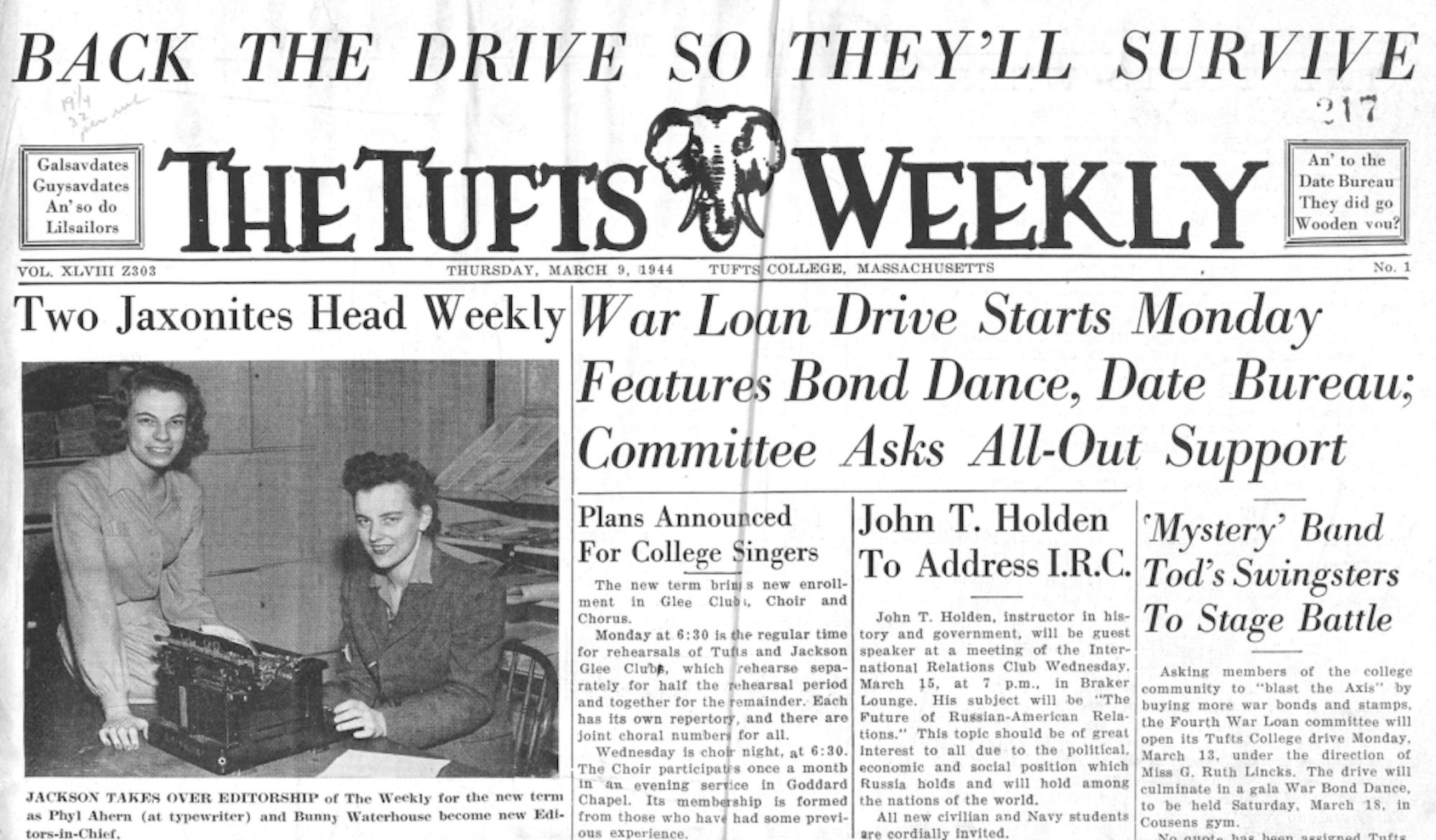Student-run publications have always been a vital part of campus life at Tufts. However, these publications have evolved in many ways. Looking back at issues from student publications from the 20th century, it is clear that Tufts and its publications have become more thoughtful and inclusive.
Today, Tufts is the smallest school to have an independent daily student newspaper, which a significant portion of the Tufts student body interacts with; over 300 students are currently involved with the Daily as staff members, with many more who participate as regular readers. Prior to the Daily’s inception in 1980, the Tufts Weekly was Tufts’ primary student newspaper. The Weekly primarily focused on campus news, highlighting sports, social events and Tufts alumni, though it also discussed critical events happening on a national scale. Though it has now been replaced with the Tufts Observer, it can also be seen as a precursor to the Daily, which now fulfills the role as Tufts’ primary news publication.
From 1895 to 1900, the Weekly had no women on staff. In 1901, Charlotte Raymond Lowell, an associate editor, was the first woman on the Weekly staff. After the creation of Jackson College, the women’s college that existed at Tufts until its integration in 1980, women in the Weekly mostly focused on columns specific to Jackson, rather than contributing to content intended for the wider Tufts community. In the 1940s, this began to change.
During World War II, many young American men were drafted or enlisted in the war effort, opening up many more opportunities for women across the country. With the editors sent off to war, women were encouraged to increase their participation in “traditionally male” activities, with Jackson students writing for and even leading the Weekly. In 1944, Betty Waterhouse and Phyllis Ahern became the first female executive editors of the Weekly. In the term following, Ahern became the first woman to head the Weekly alone.Today, 66% (19/29) of the Daily’s managing and executive boards identify as women, a change in journalism on campus that began with Ahern and Waterhouse’s tenure.
Much like the current content of the Daily, student publications like the Weekly also served as a window to the other experiences of students at Tufts. For example, during WWII, engineering courses were offered for Jackson women for the first time. These included courses such as chemistry, physics, mathematics and other sciences. A few years before the end of the war, Charlotte Taylor was the first woman to graduate from Tufts’ engineering school, as a Weekly headline from 1943 proclaimed.
However, not everyone was happy with the increased presence of women in science and engineering, which the Weekly also reflects. In the long-running column Engineairs, which focused on topics of interest to engineering students, Harold Tremblay wrote that “In general, it has been found that women have not been able to grasp technical material as quickly or as thoroughly as the opposite sex,” claiming that women should take only the lowest level jobs in the science and engineering fields to free up space for men to take on more technical roles. Despite these complaints, the Weekly also highlighted Jackson alumni with technical wartime jobs, such as Mabel Keyes who served as chief of the Chemical Warfare Procurement Lab in Boston, showing pride in successful alumni regardless of gender.
Evidently, while the Weekly was moving toward more inclusion of women during this period, it still contained many misogynistic views. Later in the Engineairs column Tremblay wrote, “The women’s job is to step in when she is needed and to retire silently and gracefully when she is not needed,” revealing a common view on the Tufts campus, and throughout the nation, that women were only filling in for the men who were fighting and would return to their rightful place as the more qualified men returned after the war. These views are clearly problematic and ignored Tufts trailblazers like Charlotte Taylor and Phyllis Ahern.
The university has come a long way since these blatantly misogynistic publications. Nearly 60% of college students nationwide identify as female. Since Jackson College was integrated into Tufts in 1980, the percentage of students who identify as women has grown to 54% among undergraduates in the School of Arts and Sciences and 46% among undergraduates in the School of Engineering.
Today, the Daily works to ensure that its coverage is respectful, inclusive and representative of all Tufts students. This effort includes the Intentionality and Inclusivity Committee, which is dedicated to ensuring that the Daily’s content is “equitable, accurate and contextualized.”
Past publications in Tufts history are a window into the thoughts and experiences of Jumbos from years past. Through this window, it is clear to see the progress we’ve made in making our publications more representative of our community, as well as the continued importance of newspapers like the Weekly and the Daily to student life and expression.






